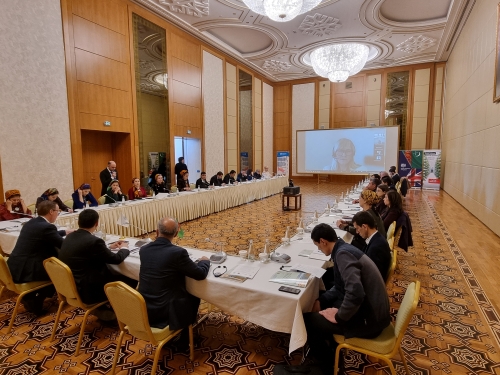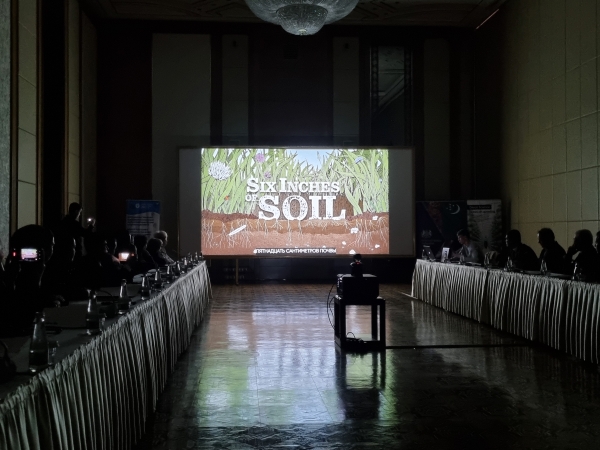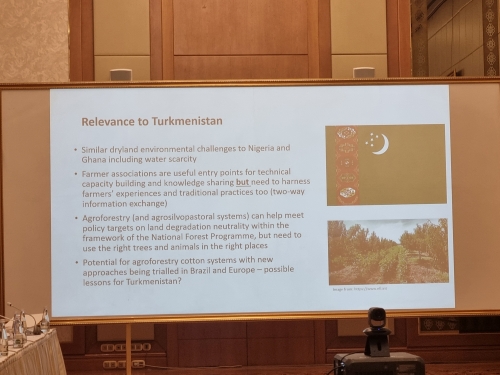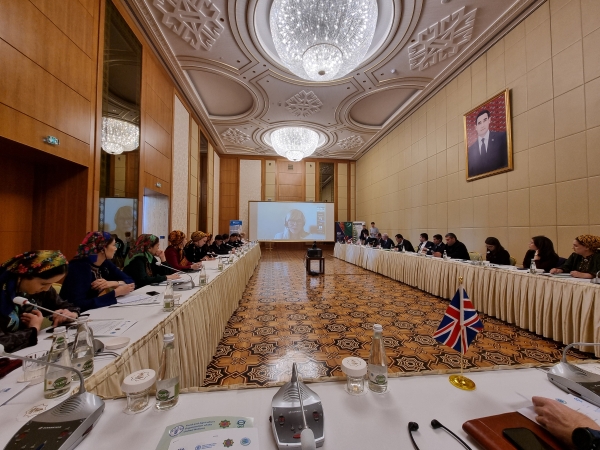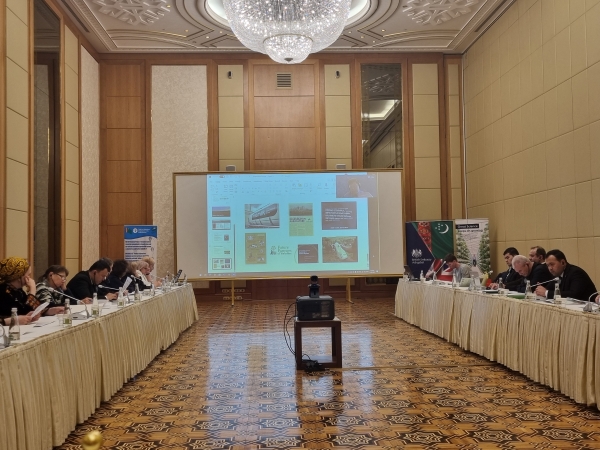nCa Report
In a world increasingly challenged by climate change, environmental degradation, and the pressing need for sustainable practices, Turkmenistan is taking bold steps toward a greener future. On February 21, 2025, Ashgabat hosted an inspiring expert discussion on regenerative agriculture and sustainable soil management—a beacon of hope for farmers, ecosystems, and communities across the nation.
This landmark event, organized by the British Embassy with the support of FAO, brought together scientists, policymakers, farmers, and global experts to explore how regenerative agriculture can transform food systems, restore ecosystems, and combat climate change. The message was clear: agriculture doesn’t have to deplete our planet—it can heal it.
At its core, regenerative agriculture is about working with nature rather than against it. Unlike conventional farming methods that often strip soils of nutrients and disrupt ecosystems, regenerative practices focus on restoring balance. By mimicking natural processes, these techniques not only improve crop yields but also enhance biodiversity, sequester carbon, and protect water resources.
One promising approach highlighted at the conference was rotational grazing. This method allows livestock to graze in a way that mimics wild herds, preventing overuse of pastures and promoting healthier soils. Healthier soils mean more nutrient-rich plants, which in turn support more productive animals. It’s a win-win cycle that benefits both farmers and the environment.
Another key strategy discussed was the careful selection of crops based on their ability to absorb carbon dioxide (CO₂) from the atmosphere while minimizing emissions from the soil. When done right, this practice could turn farmland into powerful carbon sinks, helping mitigate climate change while feeding the population.
The event, moderated by Eldar Latypov of the British embassy, featured insights from international experts who shared success stories from other regions. Professor Bob Doherty of the University of York showcased how the UK has embraced regenerative agriculture to revitalize its food systems. Meanwhile, Professor Lindsay Stringer drew lessons from African and South American countries, where innovative farmers are scaling up climate-smart methods to adapt to new realities.
Participants also watched ‘Six Inches of Soil,’ a documentary highlighting young British farmers using regenerative techniques to restore degraded lands, protect biodiversity, and safeguard human health. The film served as a reminder that industrial agriculture’s legacy—soil erosion, chemical runoff, and loss of biodiversity—is reversible if we act now.
Turkmenistan faces unique challenges, including droughts, land degradation, salinization, and water scarcity. But regenerative agriculture offers tailored solutions. For instance, Rakhmanberdi Khanekov of the FAO emphasized ongoing efforts to manage drought-prone landscapes through integrated natural resource strategies. These initiatives aim to make farming resilient even under harsh conditions.
By adopting regenerative practices, Turkmenistan can address critical issues like soil fertility, water conservation, and climate adaptation. Moreover, these methods align with modern environmental standards, positioning the country as a leader in sustainability within Central Asia.
The conference wasn’t just about theory; it was a call to action. Participants brainstormed ways to overcome barriers to adopting regenerative agriculture, such as limited awareness, lack of training, and initial costs. Policymakers were urged to create incentives for farmers, while individuals were encouraged to support local, sustainably produced foods.
Dr. Lucy Crockford’s presentation underscored the importance of natural processes in achieving cleaner water, reminding everyone that small changes—like planting cover crops or reducing tillage—can yield big results. As Professor Nicola Randall noted, the transition may present challenges, but the long-term benefits far outweigh them.
As the sun set over Ashgabat, there was a palpable sense of optimism in the air. Regenerative agriculture isn’t just a trend; it’s a movement rooted in science, tradition, and innovation. It represents an opportunity for Turkmenistan to lead by example, showing the world that economic growth and environmental stewardship can go hand in hand.
From revitalizing soils to combating climate change, every step toward regenerative agriculture brings us closer to a healthier planet. And as the discussions concluded, one thing became abundantly clear: the seeds of change have been sown. With dedication, collaboration, and vision, Turkmenistan—and indeed the entire region—can look forward to a future where agriculture truly is green. /// nCa, 22 February 2025

